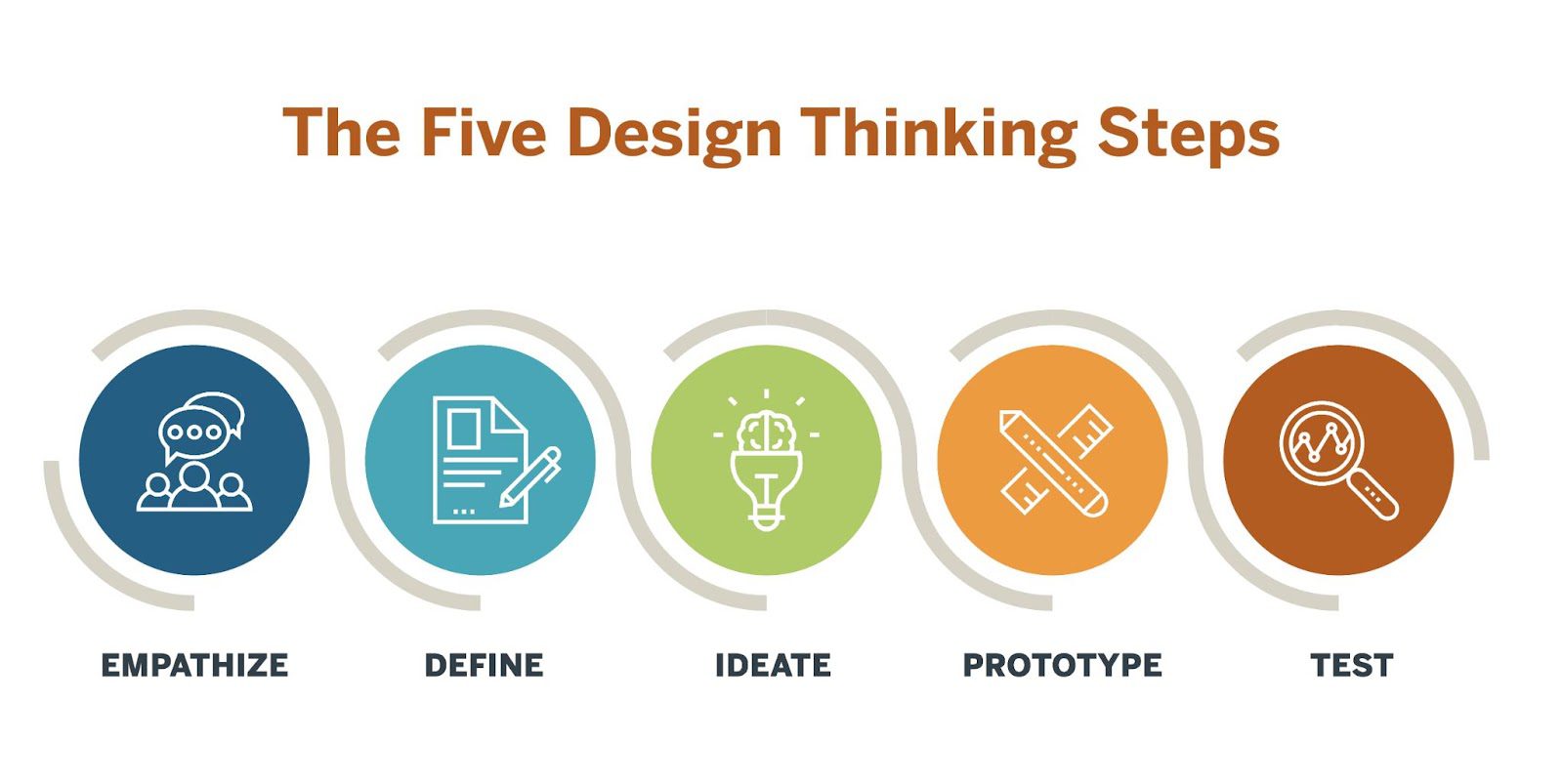Design Thinking
How Design Thinking Empowers Problem-Solving and Innovation at UpcoMinds
In today’s fast-paced world, innovation isn’t just a competitive edge—it’s a necessity. Design Thinking is one of the most effective ways to drive innovation and solve problems. Companies are constantly seeking new ways to solve complex problems and deliver their customers better products, services, and experiences.
But what exactly is Design Thinking, and how has it transformed our approach to projects? Let’s explore the methodology and share some of our experiences applying it to real-world challenges.
What is Design Thinking?
Design Thinking is a human-centred approach to problem-solving that prioritizes empathy, creativity, and iteration. It challenges traditional thinking by putting the user’s needs at the heart of the solution. This methodology is structured around five key stages:

- Empathize: Understand the users’ needs, experiences, and challenges.
- Define: Clearly define the problem based on the insights gained during the empathize phase.
- Ideate: Brainstorm a wide range of ideas and potential solutions.
- Prototype: Create simple, testable versions of the solutions.
- Test: Experiment with the prototypes and refine them based on feedback.
These stages aren’t necessarily linear—Design Thinking encourages iteration, meaning teams may cycle back through previous stages as they refine and improve their ideas.
Why Design Thinking is Effective
The beauty of Design Thinking lies in its human-centred approach. By focusing on users’ real needs, it allows teams to develop solutions that are not only creative but also deeply relevant. The process fosters interdisciplinary collaboration, allowing for richer perspectives and more innovative outcomes.
The iterative nature of Design Thinking means teams can experiment, learn from failures, and continuously refine their solutions. This makes it an ideal approach for tackling complex, ambiguous problems where the solution isn’t immediately clear.
Applications of Design Thinking in Various Projects
Design Thinking isn’t just for product design—its principles can be applied to various tasks and projects. Here’s how it can be used across different domains:
- Product Development: Creating products that meet users’ needs by focusing on real-world challenges.
- Service Design: Crafting seamless and user-friendly service experiences that delight customers.
- Process Improvement: Streamlining internal processes to improve efficiency and employee satisfaction.
- Marketing Strategies: Designing marketing campaigns that resonate with audiences by understanding their desires and motivations.
At UpcoMinds, we’ve successfully applied Design Thinking across all these areas. Below, we’ll share some case studies that highlight the impact of this approach.
Case Studies: How UpcoMinds Uses Design Thinking
Project 1: Redesigning a Digital Product for User Accessibility
- Challenge: Our client needed a more accessible version of their digital product to cater to users with disabilities. Traditional approaches have failed to make the product intuitive for all users.
- Design Thinking Approach: We began with the Empathize phase, interviewing users with different accessibility needs. This allowed us to identify pain points that we hadn’t initially considered. During the Define phase, we framed the problem around making the product universally intuitive. Ideation sessions involved our designers, developers, and even users, generating creative solutions. We developed multiple Prototypes and Tested them with our user base, iterating based on their feedback.
- Outcome: The final product exceeded accessibility standards and received glowing user feedback. The client saw a 30% increase in engagement from users with disabilities, a testament to the power of user-centered design.
Project 2: Innovating an Internal Workflow
- Challenge: Internally, we noticed inefficiencies in our project management workflow that led to team delays and miscommunication.
- Design Thinking Approach: We used the Empathy phase to understand our employees’ daily experiences and the challenges they faced with the current system. In the Define phase, we reframed the problem as communication and task visibility rather than simply a technical issue. Our Ideation sessions included brainstorming tools and strategies to enhance collaboration, followed by rapid Prototyping of new tools and processes. These were Tested across a few teams before rolling out the full solution.
- Outcome: The new workflow reduced project turnaround times by 20% and increased overall team satisfaction. The ability to iterate and refine the process through continuous feedback was key to its success.
Project 3: Enhancing a Customer Service Experience
- Challenge: A client approached us to help redesign their customer service experience, which was receiving low satisfaction scores.
- Design Thinking Approach: In the Empathize stage, we conducted in-depth interviews with customers to understand their frustrations. We learned that the issue wasn’t just response time but also a lack of personalized attention. We defined the problem as customer engagement, not just speed. Our Ideation sessions involved exploring different ways to personalize the service experience, such as integrating AI-driven chatbots that provided tailored responses. We Prototyped several versions of the new customer service interface and Tested them with real customers.
- Outcome: The redesigned service led to a 40% increase in customer satisfaction scores, with customers praising the personalized touch. The project demonstrated how Design Thinking can transform products and entire service experiences.
Lessons Learned from Applying Design Thinking
At UpcoMinds, our journey with Design Thinking has been one of continuous learning and adaptation. One of the key lessons we’ve learned is the importance of flexibility. Each project is different, and while the Design Thinking stages provide a valuable framework, they must be tailored to fit the unique challenges of each task.
Another critical takeaway has been the value of empathy. Truly understanding the user—whether a customer or an employee—is the foundation of effective problem-solving. By taking the time to deeply understand the needs and challenges of those we serve, we’re able to deliver solutions that are not only innovative but also genuinely impactful.
Why UpcoMinds Chooses Design Thinking
At UpcoMinds, Design Thinking isn’t just a methodology—it’s part of our culture. We believe the best solutions come from putting people first, embracing creativity, and never shying away from iteration. This approach has driven success across a wide range of projects, from product design to internal process improvement, and it will continue to guide us as we take on new challenges in the future.
We’re excited about what’s next for us as we continue to explore and apply Design Thinking in new and innovative ways. Whether you want to redesign a product, enhance a service, or improve a workflow, we invite you to connect with us. Together, we can turn complex problems into powerful solutions.
Conclusion
Design Thinking has transformed the way we approach problem-solving at UpcoMinds. Its human-centred, iterative approach allows us to create solutions that are not only innovative but also truly resonate with the people they’re designed for. We’ve seen firsthand how it can revolutionize products, services, and internal processes, and we’re eager to continue using it to drive success in future projects.
Don’t hesitate to reach out if you want to learn more about how Design Thinking can benefit your projects. Let’s collaborate to create solutions that make a difference.





